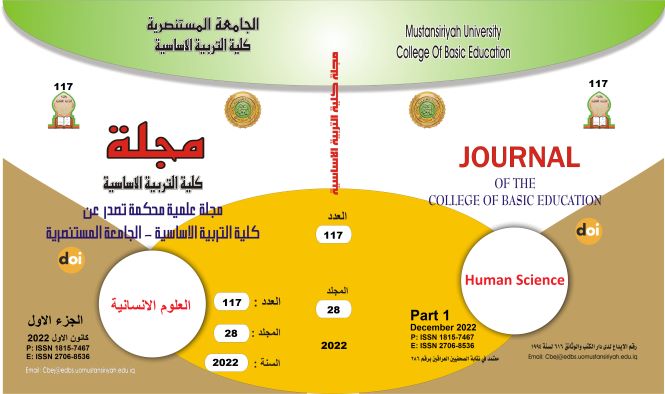Sexual role expectations and their relationship to personality patterns (A-B) among special education teachers
Main Article Content
Abstract
The aim of the current research is as follows: -
- Recognize the expectations of the sexual role of special education teachers
- Knowing the personality type (A-B) of special education teachers
- Knowing the statistically significant differences in the expectations of the sexual role according to the gender variable (male-female)
- Knowing the statistically significant differences in personality type (A - B) according to personality type (male - female).
- Knowing the relationship between sexual role expectations and A-B personality type among special education teachers
The current research community is defined by the teachers of the special education community in primary schools affiliated with the directorates of education (Al-Rusafa and Al-Karkh) for the academic year (2021-2022), and the number of members of the research sample consisted of (150) teachers and commentators from the research community, which were chosen randomly. Male and (80) female researchers.
- High expectations of the sexual role of the research sample .
- Sample of special education teachers of personality type B .
- Meals are no different from females in their expectations about the sexual role .
- There are significant differences in personality type B and in favor of meals .
- High correlation between expectations of sexual role and personality type B in the sexual relations diagram A (0.12) Personality B.
Article Details
How to Cite
Sexual role expectations and their relationship to personality patterns (A-B) among special education teachers. (2022). Journal of the College of Basic Education, 28(117), 1103-1127. https://doi.org/10.35950/cbej.v28i117.8735
Issue
Section
human sciences articles

This work is licensed under a Creative Commons Attribution-ShareAlike 4.0 International License.
How to Cite
Sexual role expectations and their relationship to personality patterns (A-B) among special education teachers. (2022). Journal of the College of Basic Education, 28(117), 1103-1127. https://doi.org/10.35950/cbej.v28i117.8735
